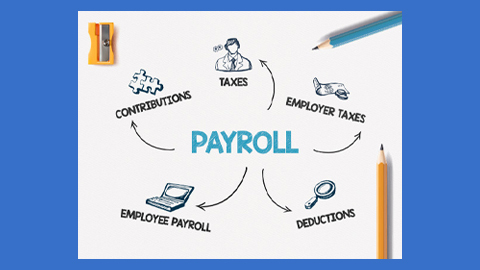
Why Choosing the Right Payroll Service is Non-Negotiable for US Small Businesses
For American small businesses, payroll processing is a regulatory minefield where errors trigger devastating penalties, employee lawsuits, and operational chaos.

With 40+ state tax jurisdictions, evolving federal mandates, and complex labor laws, selecting the right payroll service isn't just convenient—it's a survival strategy that protects cash flow, ensures compliance, and fuels growth.
Why the Right Payroll Service is Essential
Avoid Compliance Catastrophes
-
Penalties: IRS fines for late tax filings start at $50 per return (Form 941) + interest; wage violations incur 200% back pay liability.
-
Multi-Layer Regulations: Federal (FLSA overtime, FICA taxes), state (SUTA, paid sick leave), and local mandates (e.g., NYC payroll tax) demand expertise.
-
Worker Misclassification: 1099 vs. W-2 errors risk Department of Labor audits and penalties averaging $25,000 per case.
Eliminate Operational Drains
-
Manual payroll consumes 10+ hours/month—time better spent on growth.
-
In-house errors cost 1–8% of payroll annually in corrections and penalties.
Unlock Strategic Advantages
-
Cash Flow Protection: Avoid tax underpayment penalties and overdraft fees.
-
Scalability: Seamlessly add employees, states (e.g., California's complex SUI), or benefits.
-
Employee Trust: Self-service portals and accurate on-time payments boost retention.
How to Choose the Right Payroll Service
Assess Your Core Needs & Pain Points:
-
Complexity: Do you have hourly employees (overtime rules), multiple states, or contractors (1099s)?
-
Compliance Burden: Are you struggling with federal (IRS), state (SUTA, income tax), and local tax filings?
-
Time & Resources: Is manual payroll consuming hours better spent on strategy or sales?
-
Growth Plans: Will you hire rapidly or expand to new states soon?
-
Integrations: Do you need seamless links with accounting (e.g., QuickBooks), time tracking, or HR software?
Understand Service Model Options:
Payroll Software (DIY): Platforms like Gusto, QuickBooks Payroll, or Wave Payroll.
-
Pros: Lower cost, user control, good for simple payroll.
-
Cons: Requires owner/manager time, compliance responsibility remains in-house.
Full-Service Payroll Providers: Companies like ADP Run, Paychex Flex, or Rippling.
-
Pros: Handles all calculations, tax filings, payments, and compliance. Includes expert support.
-
Cons: Higher cost, less hands-on control.
Professional Employer Organization (PEO): Providers like TriNet, Justworks, or Insperity.
-
Pros: Co-employment model bundles payroll, benefits, HR, compliance, and risk management.
-
Cons: Highest cost, less business autonomy, may not suit very small teams.
Top Provider Types for US SMBs
-
DIY Software: Gusto ($39+/month + $6/employee) – Best for single-state simplicity.
-
Full-Service Providers: ADP Run (custom pricing) – Ideal for multi-state compliance.
-
PEOs: Rippling (all-in-one HR/payroll) – Solution for rapid scaling + benefits management.
Conclusion: An Investment in Survival and Success
For US small businesses, the right payroll service is not an expense—it's a critical investment in risk mitigation, operational efficiency, and strategic growth. It shields owners from crippling penalties, liberates precious time for core business functions, and provides the infrastructure needed to scale confidently. In America's hyper-complex regulatory landscape, attempting payroll without expert support isn't just inefficient; it's gambling the business's future.
Pro Tip: Always request a Service Level Agreement (SLA) specifying penalty reimbursement terms, support response times, and uptime guarantees before signing.
You May Like
Master Payroll Outsourcing: A Small Business Buyer's Guide
For small business owners, time and resources are precious commodities. While payroll is a critical function – ensuring employees are paid accurately and on time while meeting complex tax obligations – it can quickly become a significant drain.
Choosing the Right Payroll Services for Small Business
Managing payroll efficiently is critical for small businesses, but it can be time-consuming and complex. Whether you’re a startup or established SME, the right payroll services for small business can transform your operations.
How Payroll Software Redefines Modern Business
Beyond its fundamental role in accurate and timely compensation administration, contemporary Payroll Software has evolved into a critical Strategic Integration hub within Modern Business.
The Evolution of Payroll: From Manual Calculations to Digital Ecosystems
Compensation management, the essential function of ensuring employees are accurately and timely paid, has undergone a revolution. Its evolution mirrors broader technological and organizational changes, moving far beyond simple arithmetic into the realm of strategic human capital management.
Preparing for Year-End Payroll Activities: A Strategic Approach
As the calendar year draws to a close, HR and Payroll departments globally shift into high gear. Year-end payroll activities represent a critical, complex, and time-sensitive period demanding meticulous planning and flawless execution.
Optimizing Small Business Payroll Services: Lessons from Square Payroll and ADP Workforce
Small businesses enhance payroll efficiency with Square Payroll and ADP Workforce—comparing online payroll and outsourced payroll services for better processing.